
In our globalized world and ever-changing job market, verifying third-party insurance is a crucial practice for many kinds of businesses.
Understanding the basic principles of third-party insurance verification is essential, as it involves fundamental strategies to improve verification processes and mitigate risks. Third-party insurance verification essentially ensures that the insurance coverage presented by vendors, contractors, and other third parties, is valid and adequate in order to cover potential liabilities that could arise.
The process can be complicated but is necessary for mitigating risks, avoiding potential fraudulent behavior, and maintaining regulatory compliance in construction.
In this blog, we’ll explore what third-party insurance verification entails, why it’s essential for you to understand, tips for doing it both online and over the phone, and how many businesses find success and ease with paid and unpaid certificate of insurance services.
What Is Third-Party Insurance Verification?
Third-party insurance verification is the process of confirming the legitimate and adequate coverage of a third party, meaning anyone who is not the policyholder or insurer but could file a claim against you.
For example, in a building context, construction companies are expected to verify that their contractors, subcontractors, vendors, and/or suppliers are all covered by necessary requirements.
The goal here is to ensure that all third parties have sufficient insurance in place to cover potential liabilities that could arise during a project or business relationship. Businesses can incur significant legal fees, regardless of the claim’s merits, if they fail to verify third-party insurance.
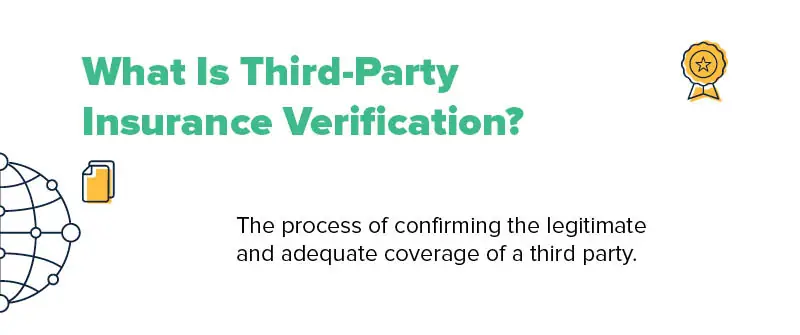
There are a few key elements in third-party verification. Typically, these include:
- Verifying the authenticity of an insurance certificate, also commonly referred to as a certificate of insurance or COI, is an insurer-produced document that provides evidence of someone’s coverage. An ID background check can provide an additional layer of verification to ensure that a policyholder is who they claim to be.
- Confirming that the insurance provider is reputable. A certificate is only valid if the agency providing it is, meaning at the least that they are financially stable enough to pay out for damages from claims that could arise.
- Ensuring that the policy’s coverage aligns with the requirements of the contract or project, especially when it comes to timelines and coverage limits.
- Ensuring that the policy’s coverage includes any additional requirements. In some cases, you may have specific requests from your third parties, such as to include certain exclusions or an endorsement naming your company as an additional insured, which you should ensure that they comply with.
Third-party insurance verification is used across industries, but especially those where businesses rely heavily on third-party services or work. Some of these include construction, logistics, transportation, supply chain management, and healthcare. In many cases, this verification is a critical risk management tool. Larger enterprises with deep pockets are more susceptible to the legal and financial repercussions of inadequate third-party insurance verification.
Definition and Purpose of Insurance Verification
Insurance verification is the process of confirming the validity and details of an individual’s or organization’s insurance policy. This crucial step ensures that the policy is active and that the coverage is adequate to meet the specific requirements of a company or organization. In industries such as healthcare, construction, and finance, where third-party vendors or contractors are frequently involved, insurance verification becomes indispensable. By verifying insurance, businesses can protect themselves from potential risks and liabilities, ensuring that all parties involved are adequately covered.
Why Is Third-Party Insurance Verification Important?
Third-party insurance verification is important for a host of reasons. Let’s cover a few of the major ones for modern-day businesses to keep in mind.
Protecting against fraud
Unfortunately, fraudulent practices like presenting forged, falsified, or expired COIs are not uncommon. Ensuring coverage authenticity through third-party insurance verification is paramount for ensuring you don’t incur unnecessary out-of-pocket expenses related to claims. An evident background check can also be a useful tool for identifying and preventing potential fraudulent activities from affecting your business.
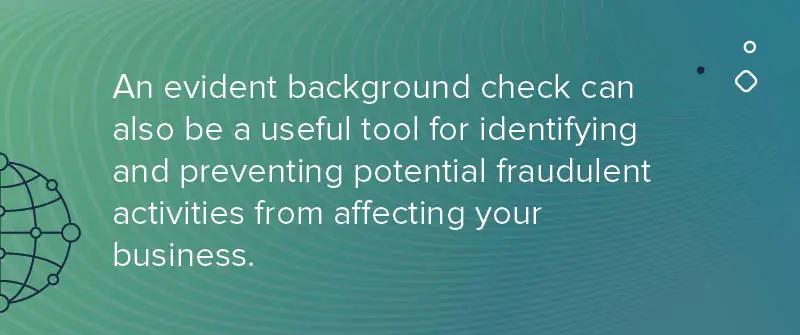
Compliance with regulations
Many industries are subject to regulatory requirements that mandate insurance coverage compliance, whether at the federal, state, or industry-wide level. For example, in construction, regulatory bodies often require that contractors carry both general liability insurance and workers’ compensation insurance. State guidelines dictate the performance of third-party liability within a managed care framework, ensuring that Managed Care Organizations (MCOs) adhere to specific responsibilities. Businesses should ensure their hired third parties comply with all regulations to avoid potential legal penalties or fines and the reputation dip that can come with them.
Risk management
Ultimately, insurance verification is a crucial risk management practice for organizations across many sectors. By confirming that relevant third parties have adequate coverage, businesses can minimize the risk of financial losses due to accidents, damages, or liabilities that could occur. Failing to verify insurance can lead to immense legal fees for companies, especially larger enterprises. Therefore, it is important to ensure that all parties involved in a project have the necessary level and kind of protection.
Inadequate verification practices are putting companies at risk for potential losses and liabilities. Proper insurance verification is essential to safeguard businesses, particularly those with significant financial resources, from substantial legal fees regardless of the validity of claims.
Understanding Third-Party Insurance Coverage
Third-party insurance coverage refers to the insurance policy held by a third-party vendor or contractor that provides protection for their work or services. This type of coverage is essential for companies that hire third-party vendors, as it helps mitigate the risk of financial losses in case of accidents, injuries, or property damage. Understanding third-party insurance coverage is vital for companies to ensure they are adequately protected and that their vendors meet the required insurance standards. By verifying that third-party vendors have sufficient insurance coverage, businesses can safeguard their interests and avoid significant expenses related to potential claims.
Types of Third-Party Insurance Coverage
There are various types of third-party insurance coverage, each serving a specific purpose to protect against different risks:
- Liability Insurance: This type of insurance provides coverage for damages or injuries caused by the third-party vendor’s work or services. It is crucial to protect against claims of negligence or harm.
- Workers’ Compensation Insurance: This insurance covers workers who are injured on the job while working for a third-party vendor. It ensures that employees receive necessary medical care and compensation for lost wages.
- Property Damage Insurance: This insurance provides coverage for damage to property caused by the third-party vendor’s work or services. It helps in covering repair or replacement costs, preventing financial strain on the hiring company.
- Professional Liability Insurance: Also known as errors and omissions insurance, this coverage protects against claims arising from mistakes or omissions made by the third-party vendor in their professional capacity. It is essential for professionals who provide specialized services or advice.
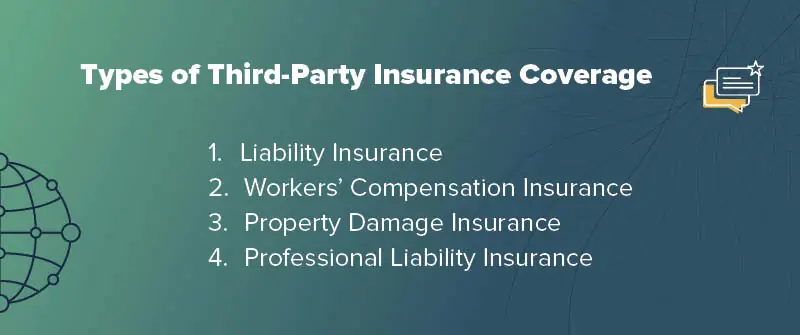
How Can You Perform Third-Party Insurance Verification Online?
While third-party insurance verification used to be a solely manual process, it, like much else, has become increasingly digital. Today, there are numerous digital tools and platforms available that allow businesses to verify coverage online. Some popular tools include TrustLayer, CertFocus, and our very own premier services here at myCOI.
Measuring response rates as part of a broader analysis is crucial to identify gaps in insurance coverage and ensure that businesses can mitigate risks associated with vendor-related liabilities.
Let’s walk through a step-by-step guide for how to verify a third party’s information online with a digital platform at your disposal:
- Obtain the COI. First, request a copy of the insurance certificate from the third party in question. Ensure that you communicate your needs (policies to verify, coverage limits, etc.) so that they know what is expected from them.
- Upload the certificate to the platform. Use your online verification tool of choice to upload the COI for automated verification.
- Review the verification results. The platform should check the authenticity of the COI, including its coverage details and the insurer’s credentials. Review the results to confirm that the coverage meets your requirements.
- Address any discrepancies or concerns. If the verification process comes back with issues or red flags, contact your third party to resolve them before they begin their work.
- Monitor compliance over time. Use the digital tool and regular correspondence with your third parties to ensure that they maintain proper coverage throughout your working relationship.
Digital verification comes with lots of great benefits, including speed, accuracy, and ease of use. Automated platforms quickly scan and verify insurance information, reducing the amount of time and effort that manual checks require.
These tools often also come with compliance tracking features that monitor coverage over time, alerting businesses of changes or lapses in coverage and ensuring that they remain compliant with industry regulations. This ongoing monitoring can help bring businesses peace of mind as they maintain their compliance even through dynamic periods. By improving compliance rates and ensuring proper insurance coverage, businesses can save money by mitigating potential legal expenses.
Role of Technology in Streamlining the Insurance Verification Process
Technology plays a significant role in streamlining the insurance verification process. Automated insurance verification software can help companies quickly and efficiently verify the insurance coverage of their third-party vendors. These advanced tools can identify gaps in coverage, provide alerts for expiring policies, and ensure that all necessary insurance requirements are met. By leveraging technology, companies can reduce the administrative burden associated with insurance verification, allowing them to focus on more critical tasks. Additionally, technology ensures that third-party vendors have adequate insurance coverage, reducing the risk of financial losses and ensuring compliance with regulatory requirements. This not only saves time and resources but also provides peace of mind that all parties are adequately protected.
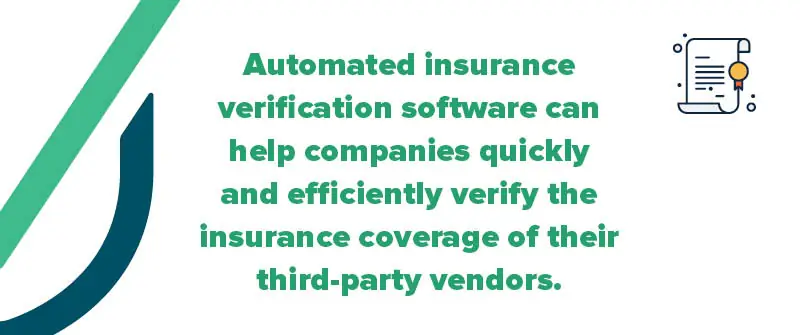
What Is the Process for Verifying Insurance Over the Phone?
In cases where online verification is not available or preferred, organizations can verify insurance coverage over the phone by contacting a third party’s insurance provider.
Health insurance plays a crucial role in the verification process, as it confirms coverage for medical services, helping healthcare providers understand payment expectations and avoid unexpected costs for patients.
Typical steps involved in over-the-phone insurance verification include:
- Locate the appropriate phone number. The insurer’s contact information is usually provided on the COI or can be found online. Or, you can call the company and wait to be directed to the right individual.
- Contact the insurer. Call the insurance company’s verification department.
- Provide the information required for verification. Lay out necessary details, including the coverage, effective dates, and additional insureds or other endorsements.
- Request verification. Ask the insurer to verify the above details.
- Document the results or make needed changes. Address discrepancies as necessary and keep a record of the verification for your files.
Verifying insurance over the phone can present some challenges for businesses, especially when compared to automated digital platforms. These can include long hold times waiting for a representative to speak, difficulty reaching the right department, or confusion about what information is required.
Consider calling during non-peak hours for reduced wait times and double-check the information on the provided COI before calling to improve efficiency and ensure accuracy.
Are There Free Options for Third-Party Insurance Verification?
While there are many paid platforms available, there are certainly options out there for free third-party insurance verification.
Despite the significant expense and resource investments made by companies to ensure compliance, these efforts often fail, leading to increased risk and potential legal liabilities if third-party insurance is not adequately verified.
For example, some insurance companies offer free online verification services directly on their website that allow you to confirm the validity of one of their policies. Additionally, certain government agencies or industry associations may provide free verification resources.
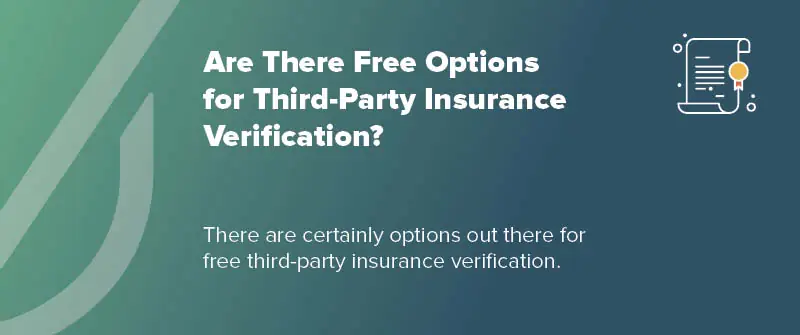
However, there are pros and cons of free verification. For example, some customers wonder how to ensure accuracy and reliability with free tools. Let’s discuss some advantages and disadvantages below:
Pros of free verification:
- Cost-effective solution for those with limited budgets
- Helpful in learning more about the process
Cons of free verification:
- Limited services and features
- Slower processing times
- Less comprehensive coverage checks
- Limited customer support and assistance
- No monitoring over time
Ultimately, exploring free tools and services can be a good way to learn more about the third-party verification process, even if you do not choose to rely on them solely for this important practice. However, always double-check the information provided by free tools and consider following up with additional verification methods if necessary.
The cost of incorrect verification can be significant, so it’s essential to invest in a service that you can trust.
Ready to Ensure Your Compliance Re: Third Party Coverage?
We know – we just covered a lot of information. If you’re not yet feeling like an expert about your organization’s level of third-party coverage, don’t worry.
We’re here to help you assess your current level of compliance and need for third-party coverage, as well as how to go about verifying that coverage for everyone involved. Our comprehensive and accurate verification process ensures your business is protected from potential risks.
Reach out to us today to get started with a free demo that can help you safeguard your workers, assets, and business.